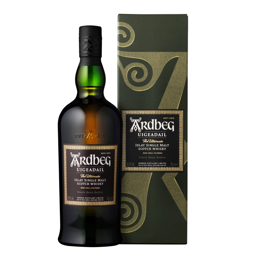Single Malt Whiskey
Single Malt Whiskey is made of 100% malted barley, in a single distillery. Enjoy our wide range of Single Malt whiskeys, selected for their authenticity and quality. Choose between Japanese Malts, Irish Malts and Scotch Malts.
Frequently Asked Questions
01 What is malt whiskey and how does it differ from blended whiskey?
Malt whiskey is the whiskey produced exclusively from barley malt. If a mixture of grains (not just barley malt) is used as raw material, then it is called a blended whiskey. We must, however, note that a malt whiskey, resulting from mixing two or more malt whiskeys, from one or more distilleries is also called blended. Such whiskeys are called blended malts.
02 What are the main flavor characteristics of a single malt whiskey?
The place of production and the aging time are of great importance. Generally speaking, a single malt whiskey (that is, a single malt whiskey produced exclusively at one distillery) has elements of wood, vanilla, citrus and spices.
03 How does aging affect the taste of a single malt whiskey?
Main factors that determine the effect of aging are the time spent in the barrel and the type of the barrel (new or used). As the aging time increases, the whiskey acquires aromas and flavors of wood, vanilla, leather and smoke. If the barrel is new, notes of vanilla and sweet spices will prevail. If it is used, eg. if it has previously been used for wine aging, then elements of leather and red fruit will "pass" into the whiskey.
04 Which malt whiskey is suitable for someone tasting for the first time?
Auchentoshan 12 Y.O. has an ideal balance of floral character and rich body. Caol Ila 12 Y.O. perfectly combines the smoky and grassy character with saltiness. Aberlour 12 Y.O. is an excellent case of spirit, where red fruit elements are "married" with caramel and chocolate elements. Glenmorangie 10 Y.O. has it all: floral notes, traces of spices and richness of fruit. Finally, Dalwhinnie 15 Y.O. is a really noble spirit, with citrus aromas and flavors of honey, dried nuts and cereals.
05 Which production areas affect the taste of single malt whiskeys?
As a general approach, the triple distillation of Irish whiskeys is responsible for their smoothness of taste. The frequent use of peat in the malting of Scotch whiskies is the reason for their smoky character. The aging of the Japanese whiskies in the remote island's special type of oak accounts for the peach, coconut and white grape elements that are usually absent from whiskeys of the rest of the world.
06 Which malt whiskey is ideal for accompanying food?
Sushi or "classic" fish dishes are excellently combined with Japanese or light Scotch whiskies. Conversely, dishes with well-cooked meat or fatty fish go well with fuller-bodied whiskeys. In any case, make sure that the food is not covered by the character of the spirit.
07 What are the differences between a peated and a non-peated malt whisky?
Due to the use of peat in the preparation of the malt, peated whiskies have smoky characteristics. On the contrary, non-peated are dominated by floral, fruity or even grassy elements.
08 What is the best temperature to serve malt whisky?
A temperature of 15°C or slightly higher is considered ideal.
09 How does the use of different casks affect the aging and taste of malt whiskey?
The construction wood is important. If the barrel is made of American oak, then the whiskey will acquire notes of vanilla and caramel. If it is made from European oak, then the spirit will be enriched with elements of spices. On the other hand, Japanese oak offers a tropical fruit character, along with spicy traces. Finally, cherry barrels are responsible for a very interesting tea and licorice dimension. However, previous use, if any, is also important. As a rule, ex red wine barrels impart raisin and forest fruit tones, while ex white wine ones impart floral and white-fleshed or tropical fruit tones. Finally, using ex bourbon or ex rum casks results in a creamy, syrup-like texture of the malt whiskey.
10 Which malt whiskeys are recommended for use in cocktails?
Two of the most recommended are Bushmills 10 Y.O. from Ireland and The Glenlivet 12 Y.O. from Scotland. Their tropical fruit notes and creamy texture make them an ideal base for excellent cocktails. More sophisticated is the Scottish Arran Quarter Cask. Its spicy character creates particularly intense cocktails. Highlight in cocktails is the also Scottish Macallan 12 Y.O., which infuses enchanting elements of American and European oak.

























